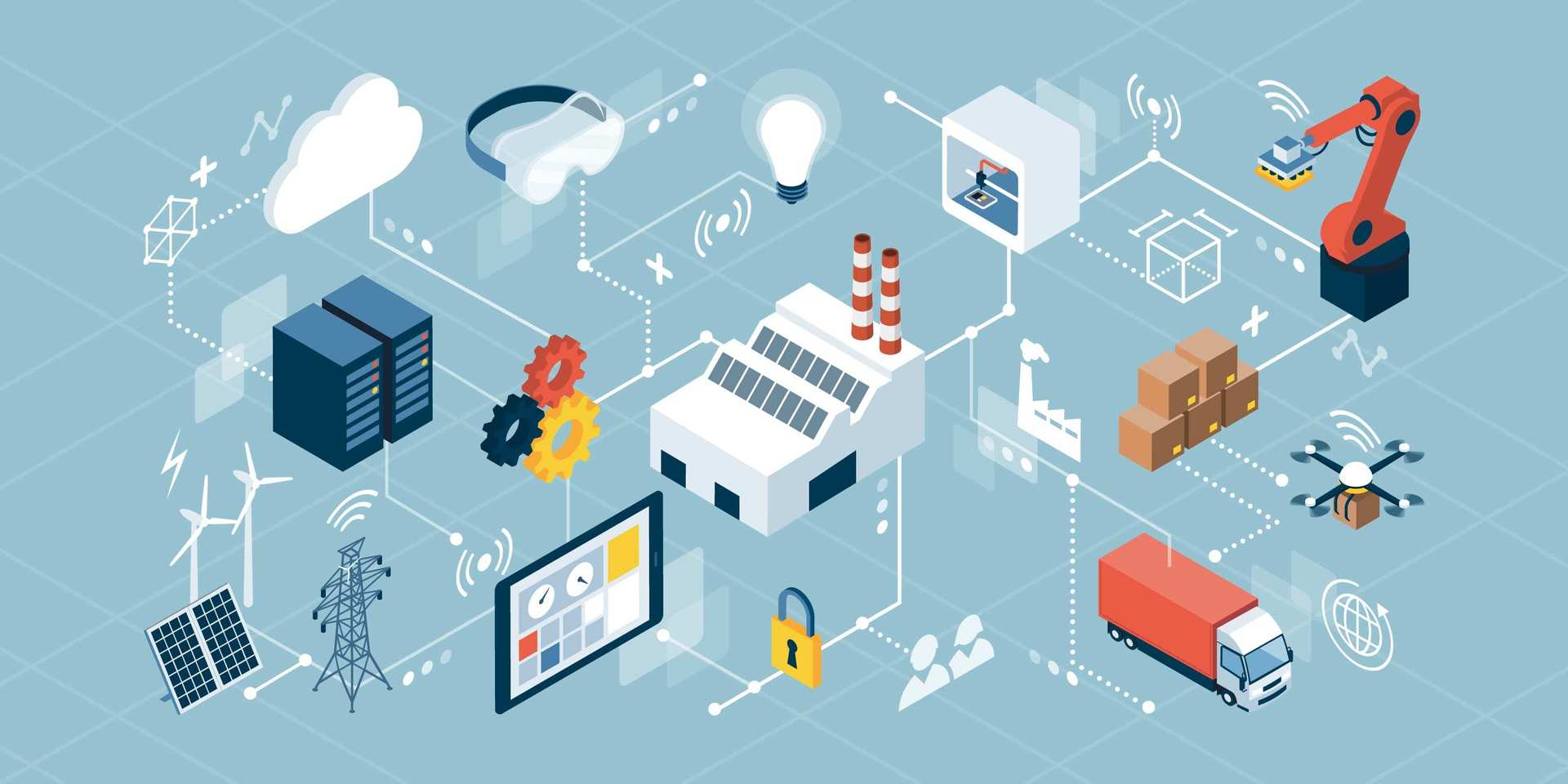Connecting IoT devices apart from computers and cell phones to the Internet is known as "the Internet of Things" (IoT). Everything from automobiles to refrigerators, heart-monitoring devices, ovens, and watches can be linked.
IoT (Internet of Things) is a term you've probably heard in the tech world for several years. A flashy jargon may have you stumped, but you may not know what it is and what it implies beyond that. We predict more than 1.6 trillion IoT devices to be in use globally by 2027, which means that the IoT will touch almost every aspect of daily life. IoT 101 by Insider Intelligence explains IoT basics and whatever this next era of innovation means for consumers, communities, & corporations.

For IoT devices to know what to do about the data that has been collected, the IoT architecture helps. When the data arrives at its destination, it tells the system where to go and what to do. The IoT architecture consists mainly of components engaged in the data flow from the IoT edge to the Internet or server using "things." People and machines are both 'things.' Each stage of IoT architecture is broken down into four distinct components. First, there is no time to waste, so let's get started.
Data from "things," such as machines, cars, equipment, people, and other devices, is the system's primary goal. Sensors and actuators perform different functions: sensors monitor and sense, while actuators control. An immediate response or reaction may or may not be required depending on the information gathered by sensors. For example, the sensors can tell actuators what to perform in real-time, no matter what. The data pipeline from sensors to actuators is frequently analyzed to ensure that control/commands are sent to "things" in a timely manner.
In most cases, this is where sensors' analogue data is transformed into digital data. For example, a DAS (data acquisition system) collects analogue data from the sensors and converts it to digital data. Data must first be formatted and aggregated by the DAS before it can be delivered across an internet gateway, such as a WAN. The data logger must filter and compress the data to the best possible size because the volume of data is at its maximum. This is typical for the best IoT companies.
Preliminary data about the Internet of Things (IoT) devices is collected here. The pre-processing on the edge device includes extensive data analytics. This is done to limit the amount of data sent to the web or data processing centre from the DAS. This typically occurs around where the sensors are located on an IoT device.
Data analysis, processing, and storage are all done here. The use of sophisticated information technology is vital at this stage because of how intensive and critical it is. Data analysis and data storage must be done correctly for this to be done properly. In the cloud or a data management centre, the entire process occurs. The Internet of Things can be seen by combining data from various sensors. This will assist IT and business managers in implementing well-thought-out findings. In this step, data is also kept in warehouses to retain a record or to analyze further.
Examples of sectors where IoT solutions can be implemented are shown in the following table.
It aids businesses in keeping track of and managing their inventory, as well as improving the shopping experience for their customers, streamlining their supply chains, and lowering their total operating costs. In addition, beacons can be used for marketing, security, and other purposes, and IoT also enables devices like smart shelves with balance sensors for inventory management.
The Internet of Things has made it feasible for sensors to detect broken parts, GPS tracking devices to help recover & monitor vehicles, and autonomous vehicles to run without human interference.
nRF52805-based wireless BLE 5.0 Module is a compact size, versatile, and ultra-low power wireless BLE 5.0 Module. The module's 2.4 GHz Transceiver and integrated 32-bit ARM Cortex® M4 CPU allow it to be an ideal Bluetooth connectivity solution.
Using MS46SF11 in cost-constrained applications is a great choice. Beacons, disposable medical gadgets, sensors, and other applications are ideal for this type of battery.
Depending on the weather, driver availability, vetements, and other factors, you may issue commands & control seafaring vessels, automobiles, and even trains using IoT sensor data. These sensors can also be used to keep track of goods. For example, you can use IoT monitoring solutions to carry sensitive goods like food, drinks, drugs, or flowers.
Manufacturing
When IoT sensors notice a problem, IoT manufacturers can use production-line monitoring to repair dynamic equipment. Using sensor alerts, they can keep tabs on the efficiency of their production processes.
Healthcare
Doctors and other medical professionals must maintain tabs on the patients' health they are caring for.
Internet of Medical Things (IoMT), Industrial Internet of Things (IIoT), smart cities and fleet management are just some examples of ScienceSoft's IoT solutions.